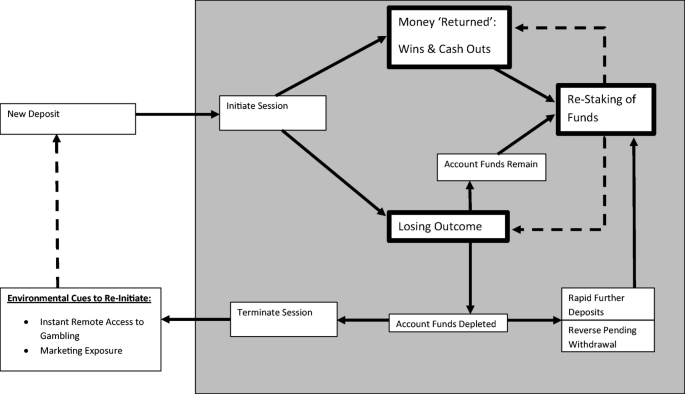Long Bets Org
Human Languages. Browse the interactive disk online and contribute to the archive. A public arena for enjoyably competitive predictions, of interest to society, with philanthropic money at stake. Long Now's unique bar, cafe, museum, library, event space. Open in San Francisco 10 a.m. This bet is applicable only for them at the moment. Any mRNA vaccine with the same results in the future is counted in this bet too. By serious long-term side effects, I mean long-term or lifelong disability and death, caused by any evidence-based mRNA vaccine in the next 5 or more years. About: The Long Island Region PGRC is a program of the New York Council on Problem Gambling, which is funded by the New York State Office of Addiction Services and Supports. The Long Island PGRC is dedicated to addressing the issue of problem gambling in Long Island through increasing public awareness and connecting those adversely affected with services that can help them. Long Bets takes a portion of the growth in assets being held as its own overhead to adjudicate bets in the future. (I am involved with Long Bets but receive no payment from it.) In the case of the Buffett Big Bet, the arrangement was an immediate contribution to Long Now from both sides of the bet.
Nils Gilman, VP of Programs at the Berggruen Institute, Deputy Editor of Noemamagazine, and a Long Now Speaker, has won a 12-Year Long Bet about Women in Sports. In 02008, Gilman challenged a prediction by Thomas R. Leavens, a Chicago attorney, that by the end of 02020, a professional sports team that was part of either the National Football League, the National Basketball Association, Major League Baseball, the National Hockey League, or Major League Soccer would integrate and have a woman as a team member on its regular season roster.

Leavens presented the following argument in favor of his prediction:

While there may be a rational basis for arranging competitive sporting events by gender when the competition is one-on-one, such as track, skiing, or tennis, that rationale starts to break down with respect to team sports, where gender physical differences may not have the same impact and women may not be viewed as being disadvantaged (or advantaged) by competing against men. Participation by women in all areas of sports has increased, with many entering areas previously occupied only by men. However, to my knowledge, no woman has been selected as a player with a major US professional football, soccer, hockey, basketball, or baseball team. My prediction is based on the belief that by 02020, a woman athlete will emerge as a member of such a team, based not only on her skill but also on the greater available pool of women playing such sports, the incentive of the greater talent compensation available to players on the major sports teams (as opposed to the compensation paid to current women-only sports teams), and the changing overall societal view of the role of gender that will make a team’s decision to add a woman player to a previously all-male team more compelling.
Gilman challenged Leavens’s prediction on the basis of the physical disparities in size, speed, strength and testosterone levels that advantage men in most sports—resulting, by some estimates, in an 8-12% performance gap between the sexes:
In many sports, men and women are able to compete at nearly equal levels. Sports that are primarily about eye-hand coordination, reflexes, and rapid decision making are ripe for gender integration. However, there are many sports for which strength — in terms of explosiveness, endurance, and sheer force — are predominant factors in determining excellence. At the elite, professional level, male athletes in these sports exceed the conceivable strength of all females. This applies to football, soccer, hockey, basketball and baseball. Genetic or chemical modification could conceivably change this, and if such technologies were to become available, they would presumably also be used by male athletes, thus leveling the playing field.
While these leagues madenotableprogress toward gender integration outside of the field of play, none came close to adding a woman as a team member.¹ Gilman’s $500 in winnings will go to the UC Berkeley History Department, where he completed his Bachelors, Masters, and Doctorate degrees.

At first glance, Gilman appeared to win this bet handedly. But it was closer than the final score suggests.
“At the time the bet was made, the categories of ‘men’ and ‘women’ were much more stable than they are now — the bet itself presumes that everyone (in men’s professional sports) will be cis-gendered,” Gilman tells Long Now. “So far, in fact, that has turned out to be true, but at this point I wouldn’t count on that lasting that much longer.”

There have been significant advances in trans-visibility and trans-rights since 02008. These advances have occurred alongside a societal evolution regarding the fluidity of gender. This is especially evident in Gen Z, the demographic cohort whose members were born in the mid-to-late 01990s.
According to a 02018 report on gender fluidity, nearly 25% of Gen Zers expect their gender to change throughout their lifetimes. Of those, “45% expect their gender identity to change 2-3 times.”
How would the bet have been resolved if a trans-woman emerged on the roster in the five professional sports leagues?
The bet’s terms made room for this possibility, stating that “a woman, or a person who identifies as a woman” would satisfy the bet.
Gilman admits that when outlining the bet’s terms, he did not have transgender people in mind, but athletes along the lines of Dennis Rodman, the eccentric basketball player from the 01990s who once wore a wedding dress to promote his autobiography. Regardless, had a trans-woman made the roster of a team, Leavens would have won the bet.
“I still think trans-phobia will prevent that from happening for quite some time, but I don’t know how long of a bet I’d want to make that for now — certainly not past the end of this decade,” Gilman says. “But at the time I made the original bet, I was so naively cis-centric that I didn’t even contemplate this possibility.”
Long Now’s Long Bets project was founded on the premise that we can improve our long-term thinking by holding ourselves accountable for the predictions we make about the future. By revisiting our forecasts as time goes by, we reveal the subtle mechanics of society’s evolution, and teach ourselves something about what kinds of visions might turn into reality.
“One of the challenges of thinking long is that one focuses inevitably on a set of things that one thinks is going to change,” Gilman says. “And one makes implicit assumptions about things that aren’t going to change.”
Sometimes, what predictors miss is as illuminating as what they anticipate.
Notes
4njbets Tvg Home
[1] The NFL came closest, but that isn’t saying much. In 02013, Lauren Silberman became the first woman to participate in an NFL try out at a regional combine. In 02019, Women’s World Cup hero Carli Lloyd was approached by several NFL teams after footage of her kicking field goals went viral, but nothing came of it.
Learn More
Long Bets Org
- Should women compete against men in sports? The Perspectiveprovides a round-up of the arguments in favor and against.
- The participation of transgender athletes in women’s sports generates much controversy and debate. Read this New York Times article on how the debate pits “two almost irreconcilable positions” against one another: inclusion and competitive fairness.
- Joanna Harper, a transgender woman, distance runner, and researcher on the International Olympic Committee, proposes a middle way through the transgender athletes in sports debate in this op-ed for The Guardian.
- Think Gilman’s on the money when he says that a woman could break through these professional sports by the end of this decade? Make your prediction on Long Bets.
- We had a number of Long Bets and Predictions made about the year 02020. Read our analysis here.